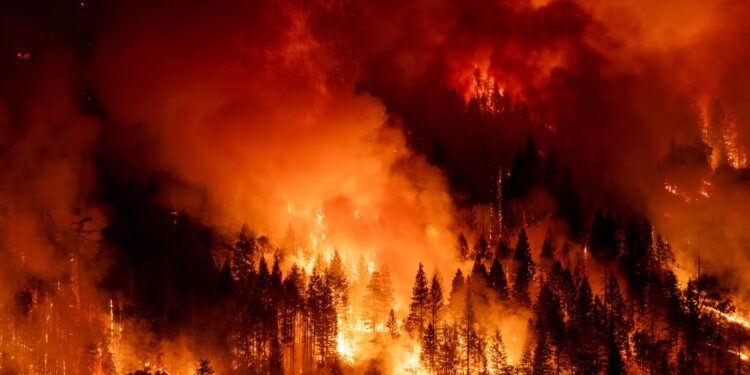The average global temperature in November was 1.62C above preindustrial levels, bringing the average for the year to 1.60C
This year is now almost certain to be the hottest year on record, data shows. It will also be the first to have an average temperature of more than 1.5C above preindustrial levels, marking a further escalation of the climate crisis.
Data for November from the EU’s Copernicus Climate Change Service (C3S) found the average global surface temperature for the month was 1.62C above the level before the mass burning of fossil fuels drove up global heating. With data for 11 months of 2024 now available, scientists said the average for the year is expected to be 1.60C, exceeding the record set in 2023 of 1.48C.
Samantha Burgess, the deputy director of C3S, said: “We can now confirm with virtual certainty that 2024 will be the warmest year on record and the first calendar year above 1.5C. This does not mean that the Paris Agreement has been breached, but it does mean ambitious climate action is more urgent than ever.”
The Paris climate agreement commits the 196 signatories to keeping global heating below 1.5C in order to limit the impact of climate disasters. But this is measured over a decade or two, not a single year.
Nonetheless, the likelihood of keeping below the 1.5C limit even over the longer term appears increasingly remote. The CO2 emissions heating the planet are expected to keep rising in 2024, despite a global pledge made in late 2023 to “transition away from fossil fuels”.
Fossil fuel emissions must fall by 45% by 2030 to have a chance of limiting heating to 1.5C. The recent Cop29 climate summit failed to reach an agreement on how to push ahead on the transition away from coal, oil and gas. The C3S data showed that November 2024 was the 16th month in a 17-month period for which the average temperature exceeded 1.5C.
The supercharging of extreme weather by the climate crisis is already clear, with heatwaves of previously impossible intensity and frequency now striking around the world, along with fiercer storms and worse floods.
Particularly intense wildfires blazed in North and South America in 2024, the EU’s Copernicus Atmosphere Monitoring Service (Cams) reported last week. The fires, driven by severe droughts, affected the western US, Canada, the Amazon forest and particularly the Pantanal wetlands.
Mark Parrington, a senior scientist at Cams, said: “The scale of some of the fires in 2024 were at historic levels, especially in Bolivia, the Pantanal and parts of the Amazon. Canadian wildfires were again extreme although not at the record scale of 2023.” The fires caused high levels of air pollution across continents for weeks, he said.
The economic damage caused by extreme weather is rising, according to the research institute of insurance firm Swiss Re. Its data found that estimated economic losses in 2024 rose by 6% to $320bn, a figure 25% higher than the average over the previous 10 years.
Hurricanes Helene and Milton and more severe thunderstorms in the US, as well as floods in Europe and the UAE, contributed to insured losses. But less than half the losses across the world were covered by insurance as poorer people were unable to afford the premiums.
“Losses are likely to increase as climate change intensifies extreme weather events, while asset values increase in high-risk areas due to urban sprawl. Adaptation is therefore key, and protective measures, such as dykes, dams and flood gates, are up to 10 times more cost-effective than rebuilding,” Swiss Re said.
Source: The Guardian









Recent Comments